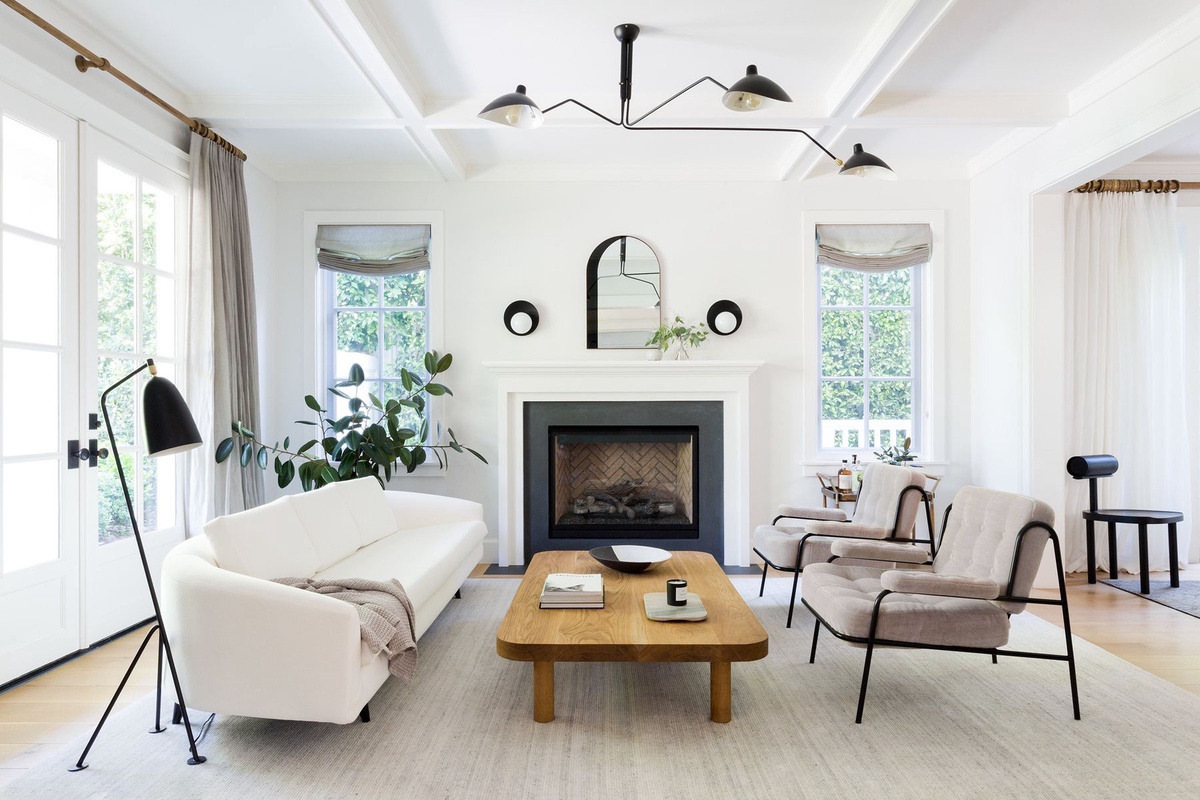The lighting in a place is the unsung star because it sets the mood and scene. Mid-century modern table lamps are always popular because they are made with the future in mind and have the right mix of form and function.
This piece is about the interesting world of Mid-Century Table Lamps. It looks at the many different kinds that were made during this time and how their beautiful designs and function made them last.
The Basics of the Midcentury Look in Interior Design
The "Mid-Century" style was popular from the 1930s to the 1960s. Compared to the complicated forms of the past, this was a big change.
Modernist architecture and interior design emphasized clean, simple lines and a mix of natural and man-made elements. The goal of the mid-century style was to make things that were both helpful and pretty to look at.
1. Organic Form Lamps
Organic lamps from the middle of the 20th century are a common example of the trend of mixing natural and industrial design elements. Most of the time, these lights had a curvy, organic shape like something you might see in nature. Organic-shaped lamps became popular when designers like Isamu Noguchi and Eero Saarinen made them out of wood, metal, and glass in a stylish and helpful way.
Isamu Noguchi's "Akari" lamps are considered classics of organic minimalism. These washi paper and bamboo lights provide a lovely glow, transforming any room into a serene sanctuary. Blending traditional craftsmanship with modern aesthetics is a perfect illustration of the dedication of mid-century designers to bridging the gap between the past and the future.
2. Atomic and Sputnik Lamps
During the middle of the 20th century, aeronautics and atomic science had an effect on design. The atomic and sputnik lights are interesting examples of how designers in the middle of the 20th century used future ideas.
Atomic lamps were based on models of molecules or atoms, so they had clear lines and geometric forms. On the other hand, the Sputnik lamp was clearly inspired by the launch of the Soviet satellite, since its arms are made to look like antennae.
3. Minimalist Lamps
People often think that simplicity was at its best in the mid-20th century. The "less is more" design principle is best shown by lights with a simple look. The sophisticated and modest beauty of these lights makes them stand out. Ludwig Mies van der Rohe, an early minimalist, is recognized with spreading the idea that "less is more."
The Barcelona Table Lamp is a great example of his design philosophy. It has a sleek metal base and a simple cylinder shade. Minimalist lighting does more than just light up a room; it also helps create a sense of unity and calm.
4. Adjustable-arm lamps
The "form follows function" style of the middle of the 20th century was best shown by lights with arms that can be moved. The lights had clever systems that let you change where and how bright the light is. This made them useful in many situations.
The Anglepoise lamp, which was made by George Carwardine, is a great example of how creative flexible arm lights can be. The spring and lever system of the Anglepoise lamp made it possible to put light exactly where it was needed. The goal of the midcentury was to improve both how things look and how well they work.
5. Magnificent Artisanal Item
Around the middle of the century, there was a rebirth in the arts and crafts of the United States. These lamps were made by skilled people who used special materials and paid close attention to every detail.
Individuality and innovation were important during this time, and these lights showed that. The "Lightolier" lamps made by Gerald Thurston are a great example of his skill.
Exotic materials like rattan and textured glass were often used in Thurston's lamps, creating eye-catching pieces that added depth and character to their surroundings. These lights might be considered both sculpture and illumination.
6. Glass and brass lamps
Because of its durability and versatility, glass and brass were often used to create stunning table lamps during the Mid-Century period. Lampshades made of glass allowed for intricate designs that interacted with light, while bases made of brass were both warm and elegant.
Designer Stilnovo's "Arredoluce" lights were a stunning combination of brass bases and clear glass shades. The lighting was improved by the union of various materials, which created a dance of contrasting textures and surfaces.
The Future Effects and Revitalization
Mid-Century table lamps were very popular at the time, so current interior designers and users may still find ideas in them. In modern design, both how something looks and how it works are important. current designers often rethink lighting from the middle of the 20th century.
They usually update the look with eco-friendly parts and current efficiency. These new pieces are inspired by the classic Mid-Century style, but they are also useful for modern life.
Conclusion
Mid-century modern table lamps not only light up a room, but also remind us of a time when technology, artistic expression, and interior design were at the cutting edge. Every Mid-Century table lamp has a story to tell, from designs inspired by nature to ones inspired by space travel.
These lamps have become a design standard because they combine form and function so well. These lights are classic examples of art that is both beautiful and useful. They look good in both a Mid-Century Modern and a modern setting.


No comments yet